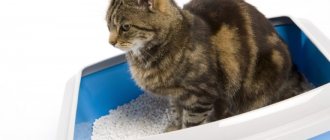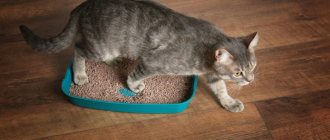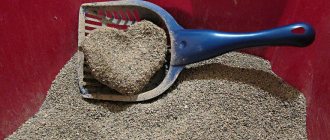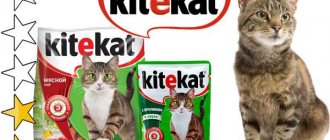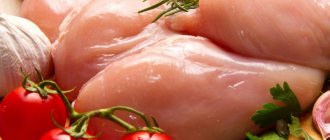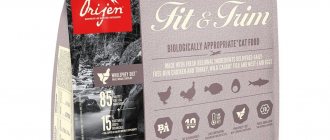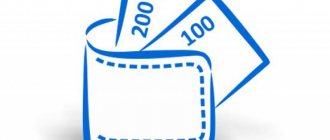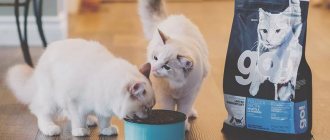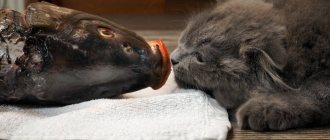The importance of choosing cat litter is undeniable. If the cat does not like what is in the tray, it may choose a completely different place to perform its natural needs.
The modern pet products market is diverse. Therefore, choosing a suitable substrate for a cat litter box is not so difficult: you just need to evaluate the pros and cons of each and make a decision. If the product you purchase does not suit your cat, you can always try other options.
What to look for when choosing
On the shelves of pet stores you can see a wide variety of cat litter. They differ in appearance, composition, properties and principle of action. Sometimes the choice depends not only on what product you like or how much you are willing to spend - the deciding factor will be your pet's opinion.
Absorbent or clumping
If the choice is between clumping and absorbent types, you need to take into account the characteristics of each of them. The principle of operation of the clumping composition is based on the fact that upon contact with liquid it sticks together, and lumps are formed, which are then simply removed from the tray along with the feces. The absorbent works as follows: it absorbs and retains moisture, but does not change its structure. Clumping litter for cats uses clumping litter more economically, since it does not need to be completely changed often.
Cats love to bury their “deeds.” Most of them refuse to go to the toilet, even when a small amount of litter is used. Therefore, it will not be possible to remove wet areas and add fresh ones - you will have to change everything.
Each type has its own advantages and disadvantages. Finding which one is right for your pet is only possible through practice.
Fraction size
The size of the granules is of great importance when choosing: small, large and medium fractions are distinguished. As a rule, the smaller they are, the better the quality of the product: its absorbent properties are higher and its consumption is lower, especially for the clumping type. In addition, the cats themselves prefer the small size - they do not injure their paws when they come into contact with the granules and experience a pleasant sensation when raking it in the tray.
Some manufacturers have gone further: they claim that their products contain healing substances in the composition, which is why it is so important to choose the right size of granules. If the cat likes it, there will be a healing effect.
Physiological and psychological characteristics of a cat
At first glance, it may seem that choosing a filler is not a difficult matter: you just need to come to the store and buy the product you like. But do not forget that pets have their own physiological and psychological characteristics. For example, for long-haired individuals the type with large granules is suitable, for kittens - only with small or medium ones.
For kids, you need to choose the most natural composition, since out of curiosity they can taste the granules. Wood or soy options would be ideal.
Some manufacturers produce litter trays even for older cats. Their feature is a more pronounced antiseptic effect and protection against unpleasant odors. In any case, your pet has the final say. You can buy the most expensive pet product with the best properties, but if the cat doesn’t like it, the purchase will not be justified.
Cat behavior when using the toilet
In some cases, the cat completely refuses to use the toilet and does its business in the most unexpected places, while avoiding the tray itself or using it in an unusual way, for example, sleeping in it.
It is impossible to talk to a cat directly and find out its opinion on this issue, but the animal’s behavior can tell a lot to an attentive and caring owner.
Most cats that do not suffer from mental problems do not show dissatisfaction and go to the toilet with any litter. The exception is when the material contains any compounds that cause allergies in the animal. Then it cannot use its toilet purely physically.
In general, a cat’s requirements for litter can be outlined by the following points:
- the material should not contain any flavorings so that nothing distracts the animal’s keen sense of smell;
- the particles should not rustle loudly, knock or make any loud sounds, since cats prefer not to reveal their location to a hypothetical enemy during such an intimate process;
- It should be comfortable for the cat to dig into the tray; it is best if the filler particles are easily mixed and do not stick to the paws or raise dust;
- it is desirable that the material was natural, at least partially.
All cat owners are familiar with their pet's behavior in the toilet. These animals, with varying degrees of energy, dig out a place for themselves to relieve themselves, and then bury them. This behavior is due to the fact that all domestic cats descend from wild ancestors who were forced to take care of their own safety.
Most mammals on our planet navigate the world around them mainly by smell. Good eyesight or acute hearing are also inherent in some of them, but everyone smells smells, drawing from them the information necessary to choose a behavioral strategy. Excrement can tell a lot about an animal to another member of the fauna.
Domestic cats seem to have no need to perform this ritual and ensure safety, but almost all of them continue to bury their excrement. The cat teaches this to the kitten along with all other skills. It is a fixed behavioral pattern that animals continue to pass on from generation to generation, despite the fact that it has lost its practical value.
In addition, the genes of a cautious predator make cats constantly worry about survival and safety. Even a calm home environment, an always filled bowl does not make them careless, they are always ready to survive in any conditions
And they continue to follow the traditions learned from their mother.
Sometimes cats don't bury their excrement, and that should tell a sensitive owner a lot. There may be several reasons for a change in behavioral pattern. The cat may not hide evidence of his presence for the same reasons that in other conditions he carefully “destroys evidence.” It's about establishing your dominant role.
In most cases, this is due to the fact that there are several animals living in the house, especially if there are two or more mature cats. People call this behavior “marking territory”; it is for this purpose that cats leave their urine, saliva, feces, and rub against corners with glands that secrete odorous substances. This is how they establish their rights.
In some cases, cats stop burying feces for emotional reasons. If there are “clouds gathering” in the house, a difficult emotional situation, cats feel this very keenly. Then their behavior can change greatly, and they stop performing some usual actions, and, on the contrary, begin to behave in an unexpected way.
Quite rarely, but still sometimes cats are simply embarrassed to do their business in front of someone. Of course, the concept of shyness cannot be fully applied to cats. This behavior is due to the fact that when an animal is observed, it does not feel safe.
In such cases, we are not talking about a filler that we don’t like. It may be worth considering purchasing a closed litter box where your pet will be protected from prying eyes.
Types of the best cat litters
It is difficult to single out one type and call it the best - the choice is very individual. Today in stores you can give preference to one of three groups: organic, silica gel or mineral. If you are in doubt which litter is better and safer for kittens, definitely look towards organic ones.
Silica gel
This is the most expensive option, but it also consumes less than others. Fillers are absorbent superporous granular mixtures based on silica gel. Capable of absorbing a volume of liquid exceeding the volume of the filler by 30 times.
Pros:
- very economical, require complete replacement every two to three weeks;
- absorbs moisture better than all others and blocks odors;
- the surface always remains dry.
Minuses:
- quite expensive;
- they creak when animals walk on them;
- not recommended for kittens, as they cause poisoning if swallowed;
- difficult to dispose of, since when flushed down the drain they are guaranteed to cause a blockage.
Silica gel extremely rarely causes allergies, even in sensitive cats. Large granules are suitable for long-haired individuals, small ones - for short-haired and elderly cats.
Woody
Wood-shaving types are made by pressing sawdust mixtures remaining after woodworking, and are fairly dense small granules of a natural color. When wetted, the granules swell, lose their shape and crumble.
Pros:
- they are environmentally friendly, suitable for both adult animals and kittens;
- hypoallergenic;
- cats can chew woody substrate, and this is completely safe for their health;
- prices for this type of substrate are quite affordable;
- They are very easy to dispose of, even down to flushing them down the toilet.
Minuses:
- the main drawback is that it does not lock out specific aromas well;
- is not economical, since it has to be changed much more often than, for example, mineral ones (depending on the individual characteristics of the pet, it may be necessary to replace the substrate several times during the day);
- lightweight, so it is scattered from trays by animals.
When choosing wood chip filler in a store, it is worth considering that imported products have the same composition as domestic ones, but differ significantly in price.
Mineral
These are compositions based on clay, zeolite, opalcristobalite and other minerals. They are absorbent and clumping. Compared to organic ones (wood, paper, soy), they are somewhat more practical.
Pros:
- perfectly locks out unwanted odors;
- excellent moisture absorption;
- clumping ones are easy to dispose of, as they form a lump that can be easily removed from the tray with a scoop;
- environmentally friendly;
- heavy, so they don’t fly out of the tray;
- have affordable prices.
Minuses:
- stick to the animal’s paws and spread throughout the apartment;
- sharp stones can injure paw pads;
- some species generate dust;
- difficult to dispose of: you have to pour the granules into a bag and then throw them in the trash;
- Not recommended for kittens, as if they enter the gastrointestinal tract they can cause blockage.
Mineral litter is sometimes combined with wood litter if the cat litter box consists of two parts: a tray and a grid. Wood pellets are poured under the grate, and mineral granules are poured onto the grate. Only the used bottom layer (sawdust) is removed regularly, and the stones can be changed much less frequently. The advantage of this use is that it is a natural replacement for chemical silica gel, and it is even cheaper.
Corn, starch and soy
These types of cat litter belong to the organic group and are considered the most environmentally friendly and safe today. No flavorings or various impurities are added to their composition. Corn filler can only be absorbent, while the other two types, due to the starch in the composition, form lumps.
Pros:
- low consumption;
- ability to flush down the drain;
- efficiency;
- nice smell;
- affordable price;
- Possibility of use for animals suffering from allergic diseases.
Minuses:
- not always easy to find on sale (more often they are ordered online on foreign sites);
- gets the animal's paws dirty.
Starch, soy and corn fillers have an absolutely natural composition, so they are in demand in families with small children.
Paper
Also belongs to the group of products made from organic raw materials. Presented in the form of pressed paper granules. Many pet owners distinguish it from other species.
Pros:
- has a natural composition;
- perfectly neutralizes unpleasant odors;
- it contains antibacterial additives, which prevents the growth of bacteria;
- does not rustle when the animal uses the toilet;
- is safe for cats with allergies;
- it can be flushed down the drain.
Minuses:
- does not absorb liquid well enough;
- some complain of a specific smell.
Previously, people used regular paper for cat litter. Now technology is very developed, and the paper filler that we see on store shelves is not just overpriced paper. This is a high-quality raw material with powerful absorbent and antibacterial properties.
Carbonic
Thanks to the unique porous structure and special treatment with activated carbon, this type of substrate has a positive difference in properties. The coal type continues to rapidly gain the trust of customers.
Pros:
- safe for animals even if swallowed;
- has a high level of fluid absorption;
- quickly forms a lump upon contact with liquid;
- is environmentally friendly;
- actively fights bacteria.
Minuses:
- gets the animal's paws dirty;
- not available in all stores.
For some consumers, a significant advantage is that after use, coal granules can be used as fertilizer. They do not harm the soil; on the contrary, they saturate it with nutrients.
Classification
The main thing is that your pet likes the litter, otherwise all attempts to accustom him to the tray will be unsuccessful.
Proof of cats' love of cleanliness is the fact that they spend a third of their lives grooming themselves. And a convenient toilet plays an important role for this.
Mustachioed and striped pets quickly get used to the place allocated by the owners for the toilet. However, it is a matter of honor for every cat to want to rummage in the sand, dig, and then bury a hole. And if earlier the matter was solved quickly and simply: “raw materials” were obtained from a nearby sandbox, or old newspapers were used, then modern cats can choose and, due to their character traits, even sort through.
Characteristics of cat litter - table
| View | Compound | Operating principle | Advantages | Flaws |
| Woody | Wood sawdust in the form of granules | Clumping or absorbent |
|
|
| Corn (subspecies of wood) | Shredded corn cobs | Absorbent | Added to the above advantages is very reliable absorbency. | Due to the lightness of the composition, the animal can scatter the filler throughout the rooms. |
| Clumping (sometimes called clay) | Clay of varying abrasiveness - from strong particles with almost no dust to a sand-like composition | Clumping or absorbent |
| Not recommended for kittens - they may choke on lumps of clay. |
| Silica gel | Synthetic white crystals (dried polysilicic acid gel) | Absorbent |
|
|
Variety of materials in the photo
Clumping fillers are considered the most convenient
Wood filler does not cause allergies, but the cat can spread small dust throughout the house
Silica gel litter is suitable only for those cats that calmly respond to the specific sound made by the granules
Corn litter is the most environmentally friendly, but small particles are easily spread throughout the house
Which cat litter is better: review of companies
The issue of choosing a filler should be taken very seriously. They absorb moisture and remove odors in different ways; others have additional properties, such as the presence of a fragrance or an antibacterial effect. Of course, you need to pay attention to all the characteristics - this will help narrow down the circle when choosing. But you may not be able to find the ideal option right away.
Ever Clean
This is a very high quality clumping cat litter. Made from special clay without dust. The granules are small enough not to injure the animal’s paws, and inside each granule there is activated carbon, which serves as a good sorbent and odor neutralizer. The product does not contain artificial flavors. The line presents a combined version, when silica gel is added to the clay components for better moisture absorption. Manufacturer – Netherlands.
"Barsik"
Consumers consider the domestic "Barsik" one of the best cat litters. Its price is very pleasing to buyers, and the quality does not suffer. The pebbles are based on clay, which is a powerful antiseptic – in some cases it even relieves inflammation on the animal’s paws. Wood is also added to improve absorbent properties. Due to its natural composition, it is suitable for sensitive cats with severe allergic reactions.
"Kuzya"
Many people prefer it because it is a worthy and inexpensive option. It is widely available in many stores. “Kuzya” is made from pressed sawdust - a natural raw material that does an excellent job of eliminating unpleasant odors. When interacting with liquid, the granules crumble, but at the same time perfectly absorb moisture. Suitable for different types of trays. It is easy to clean, the main thing is to do it on time. Produced in Russia.
"Clean paws"
The composition is absolutely natural and harmless to cats - it is made from pine wood processed using special technology. The aroma of pine needles does not repel the animal, but at the same time effectively combats unpleasant odors. It has good antibacterial properties, does not generate dust when spilling out of the package, and the granules in it are of the optimal size. Absorbs moisture perfectly: one package – about 12 liters of liquid. You are allowed to flush it down the toilet. Consumers consider Clean Paws one of the best cat litters.
"Siberian cat"
Russian-made filler is very popular because it doesn’t break the bank, and the quality of the product is at a fairly high level. The range of compositions is widely represented. Anyone, even the most capricious pet, will be able to satisfy their needs. The composition includes only natural, environmentally friendly ingredients. Absorbs moisture and odors very quickly.
"Zoonik"
This brand also represents a domestic manufacturer. Available in three versions: wood, silica gel and mineral - based on clay. Buyers especially praise the mineral clumping look. It absorbs moisture well, preventing liquid from reaching the bottom of the tray, does not crumble, does not generate dust and does not contain harmful impurities. The volume of packages is usually small, which is very convenient for families with one cat.
Pi-pi-bent
It is a Russian-made product. It has very good absorbent properties, forms fairly dense lumps that are easily removed from the tray with a spatula. Some options are flavored, which suits the taste of consumers. A significant advantage is safety: even if accidentally swallowed, the animal will not be harmed.
Fresh Step
Refers to American-made clumping clay fillers, there is also silica gel. The price is high, but the consumption is quite modest, so one 30-liter package lasts for five months. Ideally absorbs odors from sterilized animals and during the mating season. Sometimes you need to stir it so that the liquid is distributed evenly.
Cat's Best
Under this brand, the German company produces wood clumping substrates for cats of very high quality. They are made from environmentally friendly raw materials - spruce and pine wood. Cat's Best has very low consumption - you only need to completely change the litter once every 4-6 weeks. It is highly absorbent and does not stick to the animal’s paws. It can be flushed down the drain, which is very convenient.
Homecat
According to reviews, this is one of the best silica gel cat litters. It has fairly large granules and does not spread around the apartment on the animal’s paws. Suitable for trays with grids. There is an antibacterial effect and flavored options.
Catsan
The basis of this type is quartz sand, mineral additives and chalk. It has antibacterial properties, absorbs moisture very well and copes with unpleasant odors. Despite the chalk content, it does not stain the animal’s paws. Some consumers note the very convenient packaging - plastic bags of 2.5, 5 and 10 liters. It's worth mentioning that Catsan is suitable for kittens.
N1
The product was created by a domestic manufacturer. It belongs to the premium class, but can be purchased at an economical price. The line includes both clumping and silica gel cat litters. Made from completely natural ingredients. Copes with odors even during sexual hunting of animals.
Pussy-Cat
It belongs to the group of wood products - it is made from recycled materials: branches, bark. A significant plus is that it can be flushed down the toilet, like other wood substrates. Absorbs moisture well and fights unpleasant odors. Pussy-Cat is priced well compared to clay and silica gel options.
PrettyCat
Each product of this brand has its own characteristics. They are presented in two versions: clay and wood. Clay granules are produced using a special patented system. There are options with natural flavors. Has excellent antiseptic properties. A special line has been created for kittens. The manufacturer classifies its products as premium class.
Japanese fillers
Recently, Japanese cat litters have begun to gain popularity. And this is not surprising: Japanese manufacturers claim that their products are economical, environmentally friendly and completely safe for animals.
There is a wide range of products from Japan, and today they can easily be bought at a large pet store or ordered online.
Clumping type filler
Clumping litter can be considered somewhat more popular among pet owners, as it can be considered a more convenient means for this type of situation. This is due to the fact that, by absorbing moisture, it can create a fairly dry lump of a certain size, which is very easy for the owner to remove from the pot using a special spatula and throw away. At the same time, the remaining volumes of the filler remain completely dry and do not acquire any additional odor from the animal.
To make it, recycled clay is used, which is processed in such a way that it can subsequently absorb fairly large volumes of any liquid. At the same time, this material becomes quite dense and creates a dry lump that separates from the main mass of the material. They can also use paper, fine wood shavings, as well as other various waste from various industries, or intentionally manufactured raw materials for such substances.
Therefore, it is generally accepted that pet owners are more inclined to purchase clumping litter. This is both convenient and quite economical, and allows you to produce it in any color, with an additional pleasant smell. At the same time, the most expensive varieties have such a quality as changing the color of the area where the cat urine got in. This allows the owner to quickly navigate and choose to throw out exactly as much used filler as actually absorbed the liquid in the tray.
This allows you to save money and not throw away dry and usable filler for nothing. Another important fact is that this kind of cat litter can be quite easily accompanied by a special component called fragrance, which creates a pleasant smell in the room where the pet toilet is located.
How to use filler correctly
The rules for use depend on which type you prefer. Each of them has its own characteristics. If you take them into account, any filler will work correctly.
How much to pour
Usually this information is indicated by the manufacturer on the packaging. But there are still certain norms. Some pet owners believe that a large amount of pellets in the litter box will ensure less frequent cleanings. But with this you will only achieve that the cat will spread the lumps throughout the apartment. In order to save money, it’s also not worth pouring too little. The optimal amount is a layer of 4-7 cm.
How often to change
The frequency of complete replacement of the filler depends on its type. Most often it is necessary to change organic types: wood, corn, paper, since their absorption properties are somewhat worse than others.
If you use the clumping option, then the formed lumps should be removed immediately after the animal has visited the tray, and then filled to the required level. With this approach, a complete replacement can be carried out 1-2 times a month. When using silica gel, it is often not necessary to completely renew the contents of the tray; the main thing is to mix it daily.
How and where to throw it away
Substrate made from organic raw materials can be flushed down the toilet. Nothing bad will happen to the sewer if you send waste from the cat's litter box there. The exception is sewer structures with a narrow or too curved elbow, with special retaining structures, etc.
Silica gel and mineral fillers must not be thrown into the toilet. The granules have the ability to swell very much, which leads to clogging. They need to be placed in a bag, tied well and thrown into the trash - if there are no holes in the bag, there will be no unpleasant odors.
Recommendations for selection
The most affordable is wood litter, and most cats respond well to it. A clumping mineral and clay product is considered the most natural. Silica gel is one of the more expensive, but also more economical fillers.
The market is full of offers, so making a balanced and correct choice is especially important. If the animal does not like the filler, it will refuse to use the toilet and will be very distrustful of the new product.
Let's look at the main criteria that need to be taken into account.
Choose filler from well-known companies. In this case, you will be able to accurately understand that the quality and environmental friendliness of the product is controlled by both manufacturers and buyers.
For a kitten, use litter without aromatic ingredients. Experts recommend choosing this option for adult animals as well, because finding a suitable scent can be quite problematic.
Consider the animal's habits. If a cat was accustomed to silica gel in a cattery, then wood filler may cause the cat to refuse the tray.
Choose a product that has the appropriate labeling about the absence of chemical treatments and additives, and about environmental safety
When an animal digs into the litter with its paws, dust enters the respiratory system, and particles enter the digestive system. It is important to ensure the cat’s safety.
When assessing the cost of filler, take into account its cost-effectiveness. A cheap product that needs to be replaced frequently will result in higher total costs than an expensive product that can be replaced less frequently.
The large size of granules is mainly chosen for long-haired adult cats. Fine filler can get stuck in the fur and cause discomfort to the animal.
